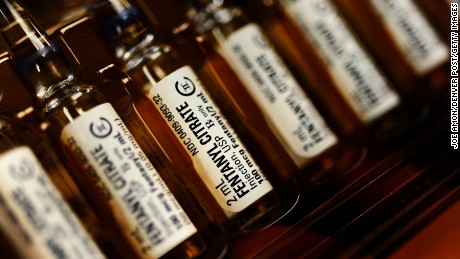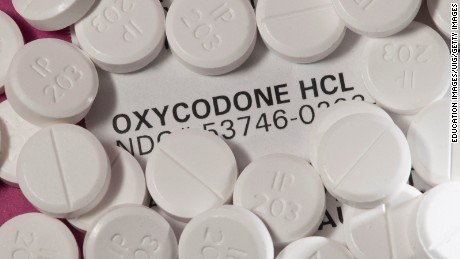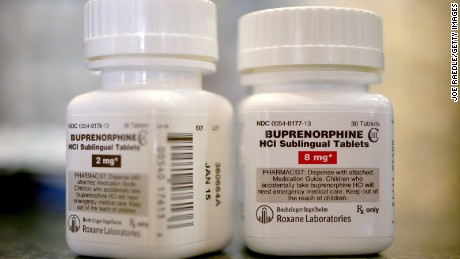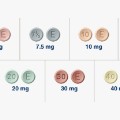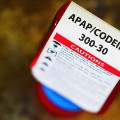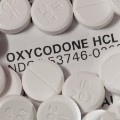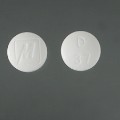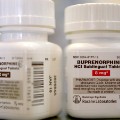Opioids: Addictive painkillers
Prescription and illegal opioids are commonly abused because they are so addictive.
Opioid medications bind to the areas of the brain that control pain and emotions, driving up levels of the feel-good hormone dopamine in the brain's reward areas and producing an intense feeling of euphoria.
As the brain becomes used to the feelings, it often takes more and more of the drug to produce the same levels of pain relief and well-being, leading to dependence and, later, addiction.
Opioids: Addictive painkillers
Oxymorphone hydrochloride – Oxymorphone hydrochloride, under the name Opana ER, was at the center of an HIV outbreak in Indiana in 2015. Some addicts began injecting and shared needles increased the spread of HIV.
In June, the Food and Drug Administration requested that Opana ER manufacturer Endo Pharmaceuticals pull the drug from the market. It was the first time the agency has asked that a opioid pain medication be pulled "due to the public health consequences of abuse." Endo announced in July that it would pull the drug.
Opioids: Addictive painkillers
Codeine – Codeine is one of the weakest opioids, often given when painkillers such as acetaminophen or ibuprofen fail to work. Because it decreases activity in the part of the brain that controls coughing, it's frequently mixed with other liquids to develop cough syrups for colds and flu. It has frequently been used for pain relief after removal of tonsils and adenoids in children.
After an investigation, the FDA restricted the use of codeine and tramadol in children under 12 and recommend against their use in children between 12 and 18 years of age. Additionally, the FDA has warned breastfeeding mothers not to take these medications due to the risk of serious adverse reactions in breastfed infants.
Opioids: Addictive painkillers
Opioids: Addictive painkillers
Fentanyl – Fentanyl citrate, pictured here, is a Class II controlled substance and one of the most powerful opioids on the market. It's often administered via injection or transdermal patch, or in lozenge form for pain after surgery, for difficult-to-manage chronic pain and for people who have developed a tolerance to other opioids.
The type of fentanyl usually associated with overdoses is bought on the street in powder or pill form and is often mixed with heroin in a clandestine lab to increase the high it produces. Street names include Apache, China girl, goodfella, jackpot, murder 8, TNT and Tango and Cash.
Opioids: Addictive painkillers
Opioids: Addictive painkillers
Oxycodone – Oxycodone is a powerful narcotic pain reliever prescribed for moderate to high pain relief. It's often given in an extended-release formula for patients who will need to be on pain medications for long periods of time.
Patients are warned not to break, chew, crush or dissolve extended-release tablets because the rush of oxycodone into the system could cause serious health problems, including overdose and death.
Though highly addictive, oxycodone is not thought to be as frequently abused as hydrocodone. OxyContin, Percocet, Percodan and Tylox are some trade-name oxycodone products.
Opioids: Addictive painkillers
Morphine – Morphine is another powerful opioid often administered via syringe for severe pain. It can come in pill form, usually as extended-release tablets and capsules, and is prescribed only to relieve difficult, chronic pain that cannot be controlled by the use of other pain medications.
As with most opioids, mixing medications, drinking alcohol or taking other meds that contain alcohol, or using street drugs while taking morphine, increases the risk of breathing problems or other serious, life-threatening side effects.
Opioids: Addictive painkillers
Meperidine – Meperidine is another narcotic analgesic, similar to morphine. It's often used to help put people to sleep before an operation and to provide pain relief after childbirth.
The most common brand name is Demerol, which comes in both tablet and liquid forms. It is usually taken with or without food every three or four hours as needed for pain.
As with all opioids, meperidine can cause drowsiness, so never drive a car or operate machinery after taking it until you know how you will react.
Opioids: Addictive painkillers
Opioids: Addictive painkillers
Methadone – Though methadone is used to relieve severe chronic pain, it's most commonly known for preventing withdrawal symptoms in patients who were addicted to opioid drugs, as a part of their recovery process.
Methadone has many of the same side effects as other opioids, including weakness, headache, nausea and vomiting, stomach pain, sweating, difficulty urinating, mood changes and vision problems, and difficulty falling asleep or staying asleep.
Opioids: Addictive painkillers
Buprenorphine – Buprenorphine is a opioid used as an alternative to methadone to help addicts recovering from heroin use. Buprenorphine is different from other opioids because it's a "partial opioid agonist," which means that when taken in proper prescribed doses, it should produce less euphoria and physical dependence, and therefore a lower potential for misuse. It's also supposed to have a relatively mild withdrawal profile.
However, if abused by crushing and snorting or injecting, it can suppress breathing and cause dizziness, confusion, unconsciousness and death.
Subutex, the brand name for buprenorphine, is taken as a tablet placed under the tongue and allowed to dissolve.
The brand Suboxone is a combination of buprenorphine and naloxone, an opioid antagonist. Antagonists block the opiate receptors in the brain, keeping the narcotic from creating the high abusers crave.





